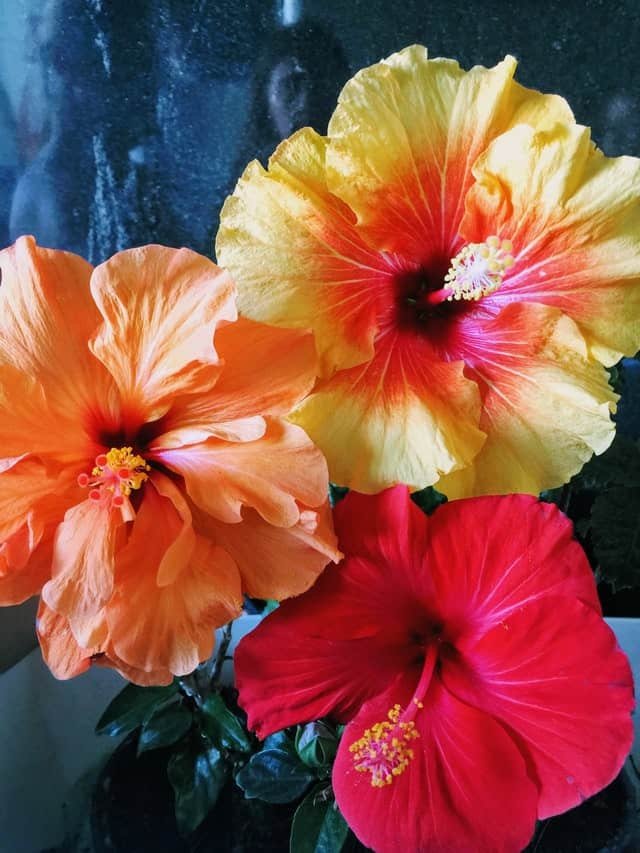
The famous hibiscus infusion, known in Latin America as Jamaican water, can be prepared using Hibiscus calyxes or petals, depending on the traditions of each country.
Its tart flavor may be reminiscent of cranberry and it is delicious both hot and cold.
In the Caribbean, it is consumed as a traditional drink during the Christmas holidays, but it is also famous in many Latin American countries and in the Middle East and Africa. Hibiscus tea was the favorite of the pharaohs in ancient Egypt and even today it is traditional to toast with it during weddings.
Properties of hibiscus infusion for health
Hibiscus offers extensive health properties according to different investigations that have been carried out in this regard. In addition, it is a source of potassium, iron and vitamins B1 and C, as well as antioxidants, mucilage and organic acids.
Would reduce hypertension
Although the first studies in this regard associated the intake of hibiscus infusion with an effect similar to that of antihypertensive drugs, currently the consideration of its effects on hypertension is more moderate. Different studies suggest that the consumption of hibiscus tea, especially the Hibiscus sabdariffa variety, for between 2 and 6 weeks would help reduce high blood pressure in people with mild to medium cases of hypertension.
The evidence to date would indicate that drinking hibiscus infusion would have antihypertensive effects. However, more research is needed in this regard.
It would increase the “good” cholesterol
Popular wisdom indicates that consuming hibiscus tea helps to level bad cholesterol and increase good cholesterol, but what is true in this statement?
Researchers studied two groups of people, one was to drink black tea and the other hibiscus tea for a month. Comparing their results with the control group, they found that the groups that had regularly ingested tea had increased levels of good cholesterol.
A later study pointed out that regular consumption does cause decreases in bad cholesterol (LDL) while increasing good cholesterol (HDL).
Would help lose weight
Due to its diuretic properties, it could help lose weight by minimizing fluid retention and helping to eliminate accumulated fat.
It is depurative
Its diuretic effect could help purify our body. In fact, it is often recommended to prevent urinary tract infections,
It would promote good digestion
Hibiscus infusion would help digest food better, thus avoiding slow and heavy digestion and heartburn.
It would help prevent cancer
Research in this regard is not decisive but indicates that hibiscus polyphenols could have anti-cancer properties. More research is needed on this.
Would inhibit bacterial growth
The antibacterial and antihistamine effect of hibiscus would help fight bacteria such as E-coli (causing stomach cramps, diarrhea and gastroenteritis) and common illnesses such as colds and flu.
Prepare the hibiscus infusion

As we have already mentioned, the infusion can be prepared in a variety of ways. It has a fruity flavor with a slight acid touch and can be drunk both hot and cold.
Ingredients:
- 4 cups of water
- 8 dried hibiscus flowers or 2 tablespoons dried petals
- Optional: honey, cinnamon, ginger, lemon or orange juice
Elaboration:
- Heat the water and when it breaks the boil, turn off the heat.
- Add the flowers or petals and let infuse for 20 minutes.
- You can sweeten with a teaspoon of honey, lemon or orange juice. If you want a tea with more flavor and body, you can add a little ginger and benefit, incidentally, from another ingredient with numerous health properties.
Hibiscus infusion is also delicious cold, as we explain in this compilation of the best teas to drink cold. By the way, in Jamaica, it is also drunk by adding a little rum to the infusion, do you dare?
Plant
The hibiscus, or hibiscus, is a plant of the malvaceae family that has more than 200 recognized species scattered throughout the world. Native to Africa and Asia, it thrives best in tropical and subtropical climates where water is abundant.
This oval-shaped, glossy dark green evergreen shrub can reach 5 meters in height. The size and color of its flowers change from one species to another, but they are all very striking. For this reason, they are highly valued for flower arrangements of all kinds.
These flowers usually have funnel-shaped petals, the center of which is topped by long stamens. It is these flowers that are infused to take advantage of the health properties of the hibiscus.
Currently, the largest producers of hibiscus are China and Thailand, although those from Sudan are especially valued. Other countries such as Jamaica, Egypt, Tanzania, Mexico and Malaysia also grow it.
